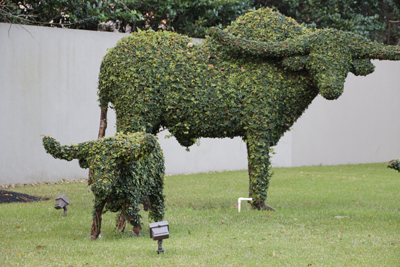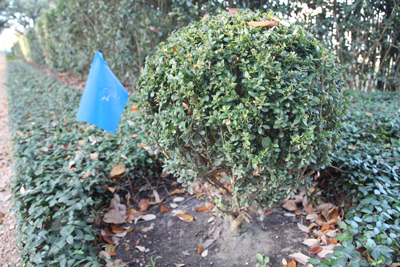Thinking about adding some living sculptures to your landscape? Keep in mind the ongoing maintenance involved before taking the shears to your entire yard.
The art of trimming or pruning trees and shrubs into unusual or ornamental shapes — into living sculptures — is not new. In fact, topiary dates back as far as ancient Rome.
But unless your skills rival those of Edward Scissorhands, topiary gardening is a landscape art that requires regular maintenance and time — a lot of time. And patience, too.
Not all shrubs react the same way to pruning so it’s important to select a species that responds well to it. You can experiment with different species of trees and shrubs, but make sure the shrubs are perennial. Whether the plant used is evergreen or deciduous is not a major issue as most topiary is evergreen.
All of the following trees and shrubs lend themselves well to topiary:
- Boxwood
- Cypress
- English ivy
- Ficus
- Jasmine
- Rosemary
To help in this meticulous work, gardeners use molds of wire and other materials, and there are countless prefabricated figures available in the landscape industry. The plants grow to fill in the pattern of the already established molds.

Topiary lends a special touch to any garden and exerts a magnetic force that attracts all eyes – hence the importance of keeping it in pristine shape.
But keeping it pristine is sometimes an issue. No shrub or tree should ever be pruned more than 25 percent. Excessive pruning, especially during periods of drought, create extreme plant stress that can destroy all your efforts. Small, consistent amounts of pruning, water and fertilizer during the growing season provide the best results for your topiary.

Consider using topiary in your landscape as it can be magical, but also keep in mind the ongoing maintenance before taking the shears to your entire yard.


